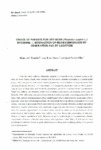Por favor, use este identificador para citar o enlazar este ítem:
http://www.alice.cnptia.embrapa.br/alice/handle/doc/477032Registro completo de metadatos
| Campo DC | Valor | Lengua/Idioma |
|---|---|---|
| dc.contributor.author | RAMALHO, M. A. P. | pt_BR |
| dc.contributor.author | SANTOS, J. B. | pt_BR |
| dc.contributor.author | PEREIRA FILHO, I. A. | pt_BR |
| dc.date.accessioned | 2011-04-10T11:11:11Z | pt_BR |
| dc.date.accessioned | 2011-04-10T11:11:11Z | pt_BR |
| dc.date.available | 2011-04-10T11:11:11Z | pt_BR |
| dc.date.available | 2011-04-10T11:11:11Z | pt_BR |
| dc.date.created | 1997-10-15 | pt_BR |
| dc.date.issued | 1988 | pt_BR |
| dc.identifier.citation | Revista Brasileira de Genética, Ribeirão Preto, v. 11, n. 2, p. 391-400, 1988. | pt_BR |
| dc.identifier.uri | http://www.alice.cnptia.embrapa.br/alice/handle/doc/477032 | pt_BR |
| dc.description | Four dry bean cultivars (Phaseolus vulgaris L.) adapted to the southern region of the state of Minas Gerais, Brazil, were crossed with five exotic cultivars according to a partial diallel design. The nine parents and twenty hybrid population, were tested in six experiment in fully randomized blocks. In one of the experiments, the segregation populations were in the F2 generation. Trials were held at two locations in the state of Minas Gerais and at one location in the state of Goias in 1986. All twenty nine-genetic materials showed heterogeneity concerning grain yield in all trials, with cultivars having a greater effect (additive gene effect) than heterosis (dominance effect), especially in the more advanced generations. No interactions between cultivar x generation effects and cultivar heterosis x generation effects were observed at any location. However, cultivar and cultivar heterosis x locations were significant, suggesting that the choice of segregating populations for genetic improvement of commons beans should be based on the performance of the populations at the locations where they will be used, but disregarding generation. In this way, because of larger quantities of seed, the material can be evaluated in the F4 generation. Despite components of means x location interactions, the population ESAL 501 x A 354 was the most promissing for selection based on grain yield because of the general combining ability of its parents and of grain quality. | pt_BR |
| dc.language.iso | eng | eng |
| dc.rights | openAccess | eng |
| dc.subject | Bean | pt_BR |
| dc.title | Choice of parents for dry bean (Phaseolus vulgaris L.) breeding. I. Interactions of mean components by generation and by location. | pt_BR |
| dc.type | Artigo de periódico | pt_BR |
| dc.date.updated | 2018-07-13T11:11:11Z | pt_BR |
| dc.subject.thesagro | Feijão | pt_BR |
| dc.subject.thesagro | Melhoramento | pt_BR |
| dc.subject.thesagro | Phaseolus Vulgaris | pt_BR |
| dc.subject.nalthesaurus | breeding | pt_BR |
| riaa.ainfo.id | 477032 | pt_BR |
| riaa.ainfo.lastupdate | 2018-07-13 -03:00:00 | pt_BR |
| dc.contributor.institution | ISRAEL ALEXANDRE PEREIRA FILHO, CNPMS. | pt_BR |
| Aparece en las colecciones: | Artigo em periódico indexado (CNPMS)  | |
Ficheros en este ítem:
| Fichero | Descripción | Tamaño | Formato | |
|---|---|---|---|---|
| Choiceparents.pdf | 4.73 MB | Adobe PDF |  Visualizar/Abrir |









